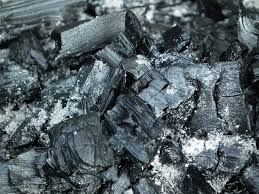 On December 22, 2008, a disposal cell at the TVA Kingston Fossil Plant ruptured, releasing an estimated 5.4 million cubic yards of fly ash in eastern Tennessee. Fly ash is one of a variety of coal combustion residuals (CCR), collectively referred to as coal ash and stored in more than 500 disposal facilities across the country. The Kingston spill prompted an EPA effort to reassess how coal ash is regulated.
On December 22, 2008, a disposal cell at the TVA Kingston Fossil Plant ruptured, releasing an estimated 5.4 million cubic yards of fly ash in eastern Tennessee. Fly ash is one of a variety of coal combustion residuals (CCR), collectively referred to as coal ash and stored in more than 500 disposal facilities across the country. The Kingston spill prompted an EPA effort to reassess how coal ash is regulated.
In the initial rule proposal, two different options for regulating coal ash were included, under the Resource Conservation and Recovery Act (RCRA), which regulates solid waste. The central question was whether to regulate coal ash as a hazardous or non hazardous waste; this decision would significantly impact the stringency of the final rule. Hazardous waste is federally regulated from cradle to grave, whereas regulation of non-hazardous waste is largely left to states and localities. The final rule, issued on December 19th, 2014, followed the later path and will regulate the more than 100 million tons of coal ash produced annually as non-hazardous. This decision leaves much to the states, though it still includes a number of baseline federal regulations. The rule will establish standards for new and existing containment facilities, place restrictions against construction of facilities in sensitive areas and require new monitoring and reporting to state and local governments. The rule also supports recycling, which utilizes roughly 40% of all coal ash produced annually.
Several environmental groups, including the Natural Resources Defense Council and the Sierra Club have expressed disappointment in the final rule, arguing that strict oversight is necessary to protect the public from future incidents. Industry response has been mixed as groups like the Edison Electric Institute (EEI) have praised the non-hazardous finding, yet expressed concerns about EPA reserving the right to reverse this decision down the road. Others, including the American Coal Ash Association, have lauded the support shown for recycling in the rule. EEI has called for legislation to remove the uncertainty that remains and several policymakers, including Sen. Jim Inhofe, R-Okla., and Rep. Shelley Capito, R-W.Va have expressed interest in pursuing such legislation in the next Congress.
Did the EPA get it right on coal ash? Should Congress pass legislation to address this issue? What is the appropriate role for states in regulating coal ash?
U.S. coal plants generate more than 150 million tons of coal ash each year, according to Environmental Protection Agency (EPA) analysis which makes it the second-largest industrial waste stream in… Read more »
The EPA just changed the rating of coal ash to a nonhazardous material. Had this been done decades ago more of it may have been utilized, to be converted into… Read more »
The proposed coal ash regulations are a start. The EPA has documented 132 cases in which coal-fired power plant waste damaged rivers, streams and lakes, and 123 where it has… Read more »
Jane – regarding toxicity it is important to separate beneficial uses from the discussion of disposal. The concern of metals leaching into groundwater is prevented with the liner standards in… Read more »
Dawn, Not sure where you get your definitive view that toxicity levels from the Dan River spill were not harmful. The U.S. Attorney’s Office for the Eastern District of North… Read more »
Jane – my information on Dan River and public water supplies comes directly from Virginia DEQ and the city of Danville, VA. Groundwater monitoring at the boundary of the power… Read more »
Dawn, What I have said is that toxicity levels are determined by a lot of inputs … “The specific physical and chemical properties of coal ash are dependent on the… Read more »
EPA made the best decision it could under the current law. Coal ash doesn’t qualify as a hazardous waste based on its toxicity. EPA recognized this when it proposed landfill… Read more »
I’ll address some specific comments and misconceptions to start: Regarding Scott’s comments on EPA’s risk assessment. As EPA was drafting the Effluent Limitations Guidelines rule (after the CCR rule was… Read more »
Toxicity levels aren’t uniform … so ‘Beneficial’ use needs a regulatory framework too. Owners and 400+ neighbors of the Battlefield Golf Club in Chesapeake, Va., have filed a lawsuit alleging… Read more »
Legitimate beneficial use has had standards and permit “frameworks” in place for decades for engineered projects (i.e. roadways, bridges). The golf course was not an engineered project. And the new… Read more »
A business case for cleaning up the mess depends on finding a use for coal combustion residuals. Calling them “hazardous wastes” does not help. Ash bricks (“green bricks”) are a… Read more »
Beneficiation technologies to dewater ponded ash, lower LOI and remove impurities that would interfere with recycling exist today. Santee Cooper in SC has been using a staged turbulent air reactor… Read more »
“In general, upwards of 75% of the heat input to the STAR must be removed from the flue gas and finished product to enable product capture in the STAR Plant’s… Read more »